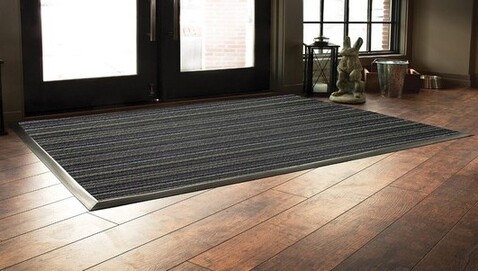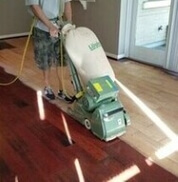Bamboo Flooring Maintenance & Care
Proper maintenance and care are key to preserving the beauty and longevity of bamboo flooring. Learn how to protect against scratches, maintain cleanliness, and prevent moisture damage. Explore recommended cleaning products and techniques specific to bamboo flooring.

Pre Installation
Your bamboo floor care begins even before installation. Allow your flooring to acclimate by simply opening both ends of your bamboo flooring boxes and allowing them to adjust to the humidity in your home. The amount of humidity in your home should stay in a range of 30-60% to minimize the rate of expansion and contraction in the planks. Clear out all debris on the ground; make certain that the entire floor is clean and flat. Before installing, inspect each plank for defects.
Installation
Follow the manufacturer’s installation instructions carefully, as they are your best source for bamboo flooring facts. Use all recommended adhesives. If you are gluing your bamboo floor down make sure to clean any excess glue as you go. This is important because once the glue dries it is incredibly hard to remove and may require an additional purchase of adhesive remover.
Post Installation
There are precautions and general maintenance guidelines that should be followed to maintain the beauty of your bamboo floor – this is essential bamboo flooring information for owners who want to preserve their investment.
- The floor should be dusted, mopped, vacuumed or swept with a soft bristle broom as necessary to remove grit and dust from the surface.
- Dust build-up or small pebbles can get caught under shoes and cause scratching or finish removal. Walking on a dusty or dirty floor is the quickest way to damage a finish.
- You should also place walk-off mats at all exterior entrances and area rugs at high traffic zones to capture as much of the harmful debris as possible, before it reaches your bamboo floor.
- Kitchen floors experience the most traffic in a home. To prevent premature wear of the hardwood floor, place an area rug in front of the sink and stove area. Shake out or vacuum the rugs frequently.
- Use felt glider pads on the bottom of your furniture; they will prevent scratches caused by chairs, couches, and tables. Keep the felt pads free of dirt and grit as well.
- Take particular care when moving heavy items such as refrigerators or cabinetry, never drag these items across your floor without sufficient protection. As with all hardwood floors, heavy appliances, especially sub zero refrigerators, have been known to scratch and even indent flooring. If you’re using a hand truck to move these items into place, make sure it is one with rubber wheels.






Bamboo Flooring Facts & Information
Bamboo is a natural product that is hygroscopic , meaning it is subject to contraction and expansion with the relative humidity in the surrounding area. Using a dehumidifier and, or humidifier to maintain relative humidity in the home at 30-60% will help keep the moisture level in the wood stable or balanced and help minimize cracks between the boards. Continued excessive humidity above 60%, typically in warm months, may cause swelling or cupping of the floor. Continued lack of humidity below 20%, typically in winter months, can cause shrinking or cracking of the bamboo planks.
Routine Cleaning
Try to use the bamboo flooring supplier’s recommendation on cleaning products on your floor. Some suppliers may stipulate that only a certain brand or type of cleaning agent should be used on the floor that they have supplied. If this is the case, be careful that you do not invalidate your warranty by using another brand or type.
- While bamboo is more resistant to moisture than most hardwoods, it is recommended not to use a wet mop or sponge to clean the floor; be sure to ring out the sponge or mop until it is only slightly damp.
- Spills should be cleaned up immediately. If liquid spills are left for a long period of time they may seep into your floor and cause deep staining which may be impossible to remove. Whenever water is used to clean up spills be sure to also dry the surface.
- Use a cleaner that will not leave a residue that will inhibit bonding and re-coating. Aluminum oxide is a popular finish because of its long lasting durability, but it can be disrupted with cleaning products containing mineral spirits. Do not use any kind of wax unless you are prepared to continue waxing through out the life of your floor. If you use a wax, no other top coat may be applied.



- High heeled shoes can damage a bamboo floor. It is not recommended that you allow such shoes to come into contact with your floor as the load pressure on such a narrow point of contact can exert a huge amount of pressure on the floor, causing it to become dented. Heel or scuff marks, and stubborn stains may be removed by lightly rubbing with a cloth and a wood floor cleaner.
- Urethane finishes eventually will show wear patterns from surface scratching. When high surface areas look dull, it is time to re-coat or restore the finish. Always follow the manufacturer’s or supplier’s recommendations. Direct sunlight for long periods of time can cause some types of bamboo floor to become discolored over time. When purchasing bamboo flooring, ask if the finish includes an UV-protective layer.
- To further protect your floors from sun damage use window screens, shades, curtains, and, or blinds. Remember, spending a little time looking after your bamboo floors will ensure that it continues to look great and lasts for many years and will be sure to help eliminate the need for any major maintenance to be carried out.